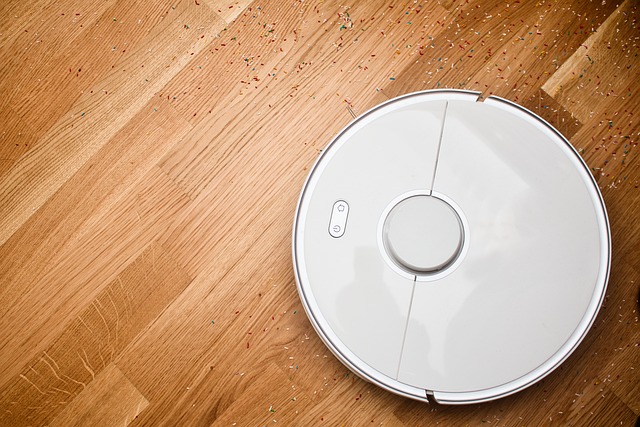Are you considering investing in a robot vacuum but wondering about the logistics of keeping it charged? If so, you’re in the right place. In this blog post, we’ll delve into the world of robot vacuum charging to answer all your burning questions. How long does it take for a robot vacuum to charge fully? Can you leave it on the charging dock all the time? What factors can impact the charging time of a robot vacuum? These are just a few of the things we’ll be exploring in detail.
We’ll also discuss the different types of robot vacuum batteries and how they can affect charging times. Additionally, we’ll provide some practical tips for optimizing the charging process to ensure your robot vacuum is always ready to tackle the next cleaning session. So, if you’re curious about the ins and outs of robot vacuum charging, keep reading to discover everything you need to know to make the most of your automated cleaning companion.
How Long Do Robot Vacuums Take to Charge?
Are you wondering how long it takes for your robot vacuum to fully charge? Perhaps you’re curious about the factors that influence charging time, or you might be seeking tips to optimize the charging process. In this blog post, we’ll delve into the intricacies of robot vacuum charging, exploring the different types of robot vacuum batteries and their charging requirements.
We’ll discuss the average charging times for various robot vacuum models and highlight the factors that can affect these times. Additionally, we’ll provide practical tips for maximizing the efficiency of the charging process, ensuring that your robot vacuum is always ready to tackle cleaning tasks.
So, if you’re eager to learn everything you need to know about robot vacuum charging, including how to keep your device charged and ready for action, keep reading!

Factors Affecting Robot Vacuum Charging Time
The charging time of a robot vacuum can be influenced by several factors. Firstly, the battery capacity plays a significant role in determining how long it takes for a robot vacuum to charge. Additionally, the type of battery used in the robot vacuum can impact the charging time.
Furthermore, the age and condition of the battery can affect the charging time. Environmental factors such as temperature can also impact the charging time of a robot vacuum. Additionally, the power source and charging technology used by the robot vacuum can influence the charging time.
Moreover, the frequency and duration of use can impact the charging time of the robot vacuum. The charging base location and the cleanliness of the contacts on the robot vacuum and the charging base can also affect the charging time. Finally, the charging status and any software or firmware updates can impact the charging time of a robot vacuum.
Optimizing Robot Vacuum Charging Time
Optimizing the charging time of a robot vacuum begins with understanding the battery capacity and type. High-capacity lithium-ion batteries generally charge faster than older, less efficient battery types.
Additionally, the age and condition of the battery can significantly impact charging time. As batteries age, their capacity decreases, leading to longer charging periods.
When optimizing charging time, consider environmental factors such as temperature. Extreme temperatures can affect the charging efficiency of the battery, potentially prolonging the charging process.
Furthermore, the power source and charging technology play a crucial role in charging time. Using a high-output power source and advanced charging technology can expedite the charging process.
The frequency and duration of use also influence the charging time. Regular, shorter cleaning sessions may result in more frequent, shorter charging cycles, optimizing overall charging time.
The location of the charging base is another key factor. Placing the charging base in a central and easily accessible location can reduce the time the robot vacuum spends finding its charging station.
Additionally, ensuring the cleanliness of the contacts on the robot vacuum and the charging base can promote efficient charging, potentially reducing overall charging time.
Monitoring the charging status and updates can help optimize the charging time by allowing users to intervene if any issues arise during the charging process.
Comparing Charging Times of Popular Robot Vacuum Models
When comparing the charging times of popular robot vacuum models, it’s important to consider the battery capacity and type of battery used in each model. Some models may feature larger batteries that take longer to charge, while others may have more advanced lithium-ion batteries that charge more quickly.
Additionally, the age and condition of the battery can significantly impact charging times, as older or degraded batteries may take longer to reach a full charge compared to newer, well-maintained batteries. Environmental factors such as temperature can also affect the charging time of robot vacuums, with extreme temperatures potentially slowing down the charging process.
Furthermore, the power source and charging technology used by different robot vacuum models can influence their charging times. Models that utilize fast-charging technology or come with advanced charging docks may have shorter charging times compared to those with standard charging capabilities.
The frequency and duration of use of the robot vacuum can also play a role in its charging time, as models that are used more frequently or for longer cleaning sessions may require more frequent charging, impacting the overall charging time.
Moreover, the location of the charging base can affect the charging time of a robot vacuum. A conveniently located charging base can ensure that the robot vacuum returns to the dock promptly for recharging, minimizing downtime.
Additionally, ensuring the cleanliness of the charging contacts on both the robot vacuum and the charging dock can help optimize the charging process, as dirty or obstructed contacts can lead to slower charging times or connectivity issues.
Monitoring the charging status and updates provided by the robot vacuum can offer valuable insights into its charging time and overall battery health, allowing users to make informed decisions about optimizing the charging process for maximum efficiency.
Conclusion: Maximizing Efficiency and Performance
When it comes to maximizing the efficiency and performance of your robot vacuum, paying attention to factors such as battery capacity, charging technology, and the environment in which the vacuum operates is crucial. By optimizing the charging time and ensuring that the robot vacuum is always ready to tackle cleaning tasks, you can maintain a consistently clean home while prolonging the life of your robot vacuum’s battery.
Additionally, staying informed about the charging status and updates for your robot vacuum can help you make informed decisions about its usage and maintenance, ultimately contributing to its overall efficiency and performance. With the right approach to charging and maintenance, you can enjoy the convenience of a robot vacuum while ensuring that it operates at its best for years to come.

